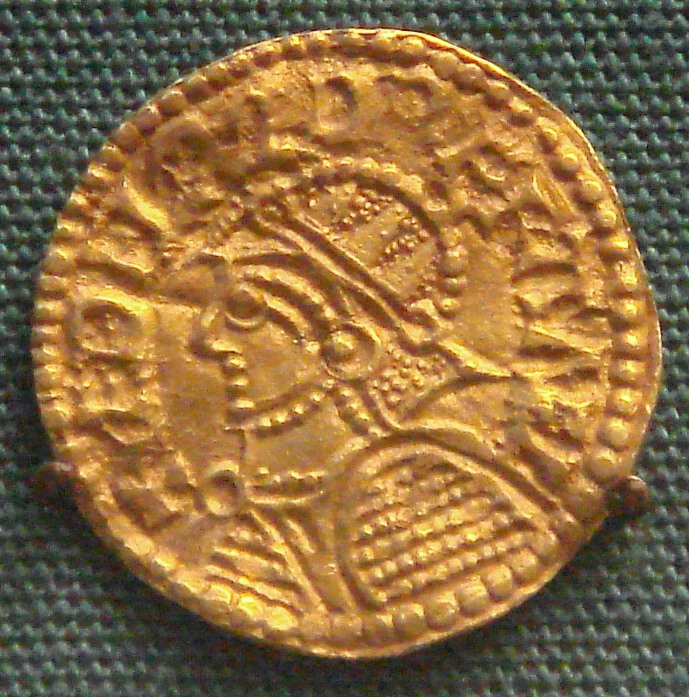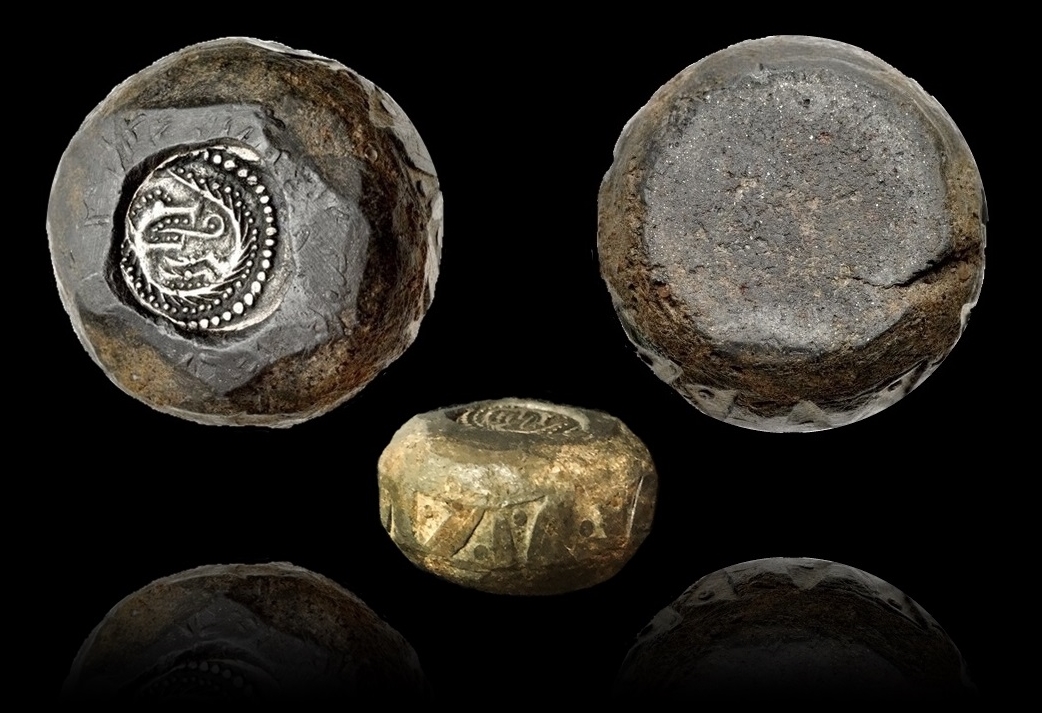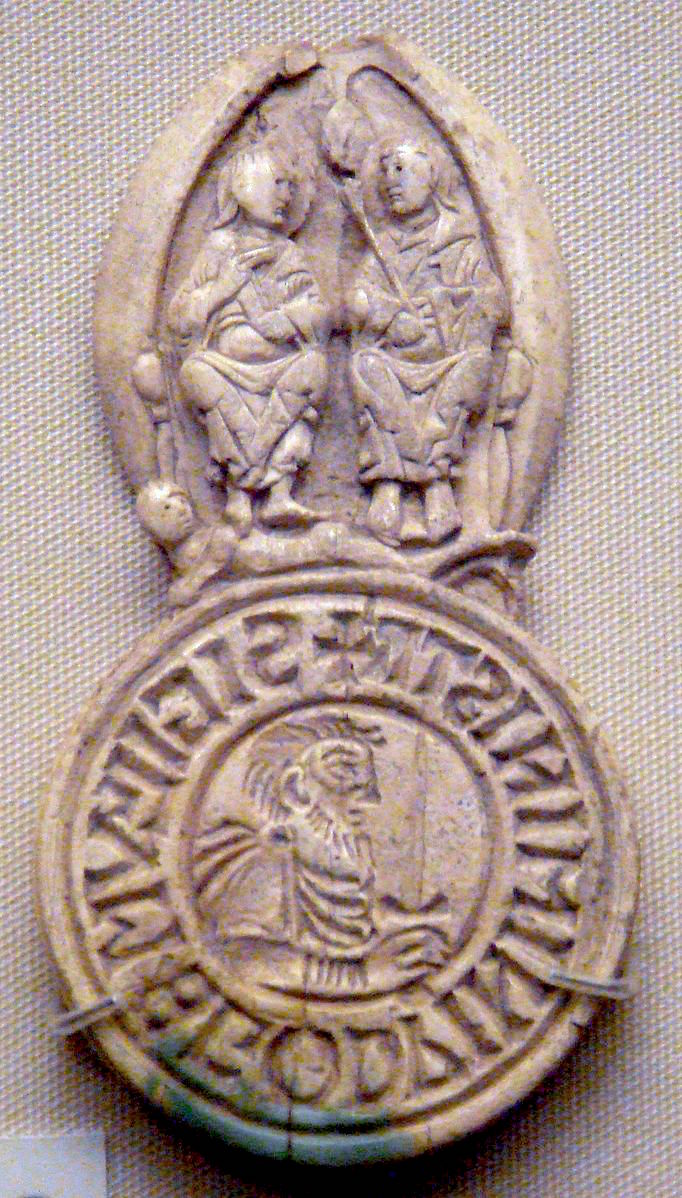|
Battle Of Ashingdon
The Battle of Assandun (or Ashingdon) was fought between Danish and English armies on 18 October 1016. There is disagreement whether Assandun may be Ashdon near Saffron Walden in north Essex, England, or, as long supposed, Ashingdon near Rochford in south-east Essex. It ended in victory for the Danes, led by King Cnut, who triumphed over an English army led by King Edmund Ironside. The battle was followed by a treaty dividing England between Cnut and Edmund, but Edmund died shortly afterwards and Cnut then became undisputed king. Prelude On 23 April 1016, King Æthelred the Unready died from an illness that he had been suffering from since the previous year. Two opposing assemblies gathered to name his successor; an assembly of London citizens declared Edmund king and the larger Witan at Southampton declared Cnut as king. During the autumn of 1016, King Edmund raised an army consisting of West-Saxon troops as well as men from Southern England to defeat a Danish force led ... [...More Info...] [...Related Items...] OR: [Wikipedia] [Google] [Baidu] |
Cnut's Invasion Of England
In the autumn of 1016, the Danish Realm, Danish prince Cnut the Great (Canute), supported by Eiríkr Hákonarson, and Thorkell the Tall successfully invaded England. Cnut's father, Sweyn Forkbeard, had previously conquered and briefly ruled England for less than five weeks. Background Sweyn Forkbeard conquered England by 1013, forcing Æthelred the Unready, King Æthelred of England to exile by the end of the year. However, Sweyn died on 2 February 1014, and the Danes proclaimed his son, Cnut, as king. Meanwhile, the English nobility recalled Æthelred who successfully expelled the Danes by the summer of 1014. That same summer Æthelred’s eldest son, Æthelstan Ætheling, Æthelstan died, leaving his younger brother, Edmund Ironside, Edmund, as heir to the English throne. Cnut wasted no time to prepare for the reconquest, Among the allies of Denmark was Bolesław I the Brave, the duke of Poland, (later crowned king) a relative to the Danish royal house. He lent some Polish pe ... [...More Info...] [...Related Items...] OR: [Wikipedia] [Google] [Baidu] |
Æthelred The Unready
Æthelred II (,Different spellings of this king's name most commonly found in modern texts are "Ethelred" and "Æthelred" (or "Aethelred"), the latter being closer to the original Old English form . Compare the modern dialect word . ; ; 966 – 23 April 1016), known as Æthelred the Unready, was List of English monarchs, King of the English from 978 to 1013 and again from 1014 until his death in 1016. His epithet comes from the Old English word meaning "poorly advised"; it is a pun on his name, which means "well advised". Æthelred was the son of Edgar, King of England, King Edgar and Ælfthryth (wife of Edgar), Queen Ælfthryth. He came to the throne at about the age of 12, following the assassination of his elder half-brother, King Edward the Martyr. The chief characteristic of Æthelred's reign was conflict with the Danes (tribe), Danes. After several decades of relative peace, Danish raids on English territory began again in earnest in the 980s, becoming markedly more se ... [...More Info...] [...Related Items...] OR: [Wikipedia] [Google] [Baidu] |
Linton, Cambridgeshire
Linton is a village and civil parish in Cambridgeshire, England, on the border with Essex. The village is approximately southeast from the city and county town of Cambridge. The A1307 from Cambridge bypasses the village, while the B1052 passes through the village. At the 2021 census, Linton parish had a population of 7,234. History The Domesday Book of 1086 records Linton as "Lintone", with 27 households and two mills. A market was first held in Linton in 1246 after a charter had been granted by William de Say, Lord of the Manor. The railway station was on the Stour Valley Railway between Shelford and Colchester, closed since 1967. The parish includes the deserted village of Barham. There are more than 120 listed buildings in Linton, the High Street alone has over 50 of these. Since the 1960s the village has expanded and is now a dormitory village of Cambridge. Landmarks St Mary's Parish Church is more properly known by its dedication to the Blessed Virgin Mary and ... [...More Info...] [...Related Items...] OR: [Wikipedia] [Google] [Baidu] |
Bartlow
Bartlow is a small village and civil parishes in England, civil parish in the South Cambridgeshire district of Cambridgeshire, England, about south-east of Cambridge and west of Haverhill, Suffolk, Haverhill in Suffolk. The River Granta runs through the village. In 2021 the parish had a population of 101. History At Bartlow is one of the smallest parishes in Cambridgeshire. Its southern border, which was partially straightened on a few successive occasions to follow the former railway line, divides it from Ashdon parish in Essex. It also has borders with the neighbouring parishes of Castle Camps (village), Castle Camps and Shudy Camps to the east, Horseheath to the north, and Linton, Cambridgeshire, Linton to the west. Though the area has been occupied since Roman times, there is no record of Bartlow itself as a village until 1232, largely because the settlement south of the River Granta with its Roman burial mounds was part of Ashdon parish nearby in Essex. Recorded as ' ... [...More Info...] [...Related Items...] OR: [Wikipedia] [Google] [Baidu] |
Hadstock
Hadstock is a village in Essex, England, about from Saffron Walden. It is on the county boundary with Cambridgeshire and about from Cambridge. The 2001 Census recorded a parish population of 320, increasing to 332 at the 2011 Census. The Church of England parish church of Saint Botolph has the oldest door still in use in Great Britain. The oldest parts of the church are thought to date from about AD 1020. Since that time, the church has received many additions and undergone several renovations. On the outskirts of the village is a disused airfield that was used in World War II. While the official name for the airfield became RAF Little Walden, it was originally named after the village of Hadstock. From 1951 until at least 1968 Hadstock boasted the only mounted Scout troop in Britain. It was led by Dr. Jock Dawson. Hadstock has a silver band. See also * The Hundred Parishes The Hundred Parishes is a cultural heritage initiative focused on an area in the East of Engla ... [...More Info...] [...Related Items...] OR: [Wikipedia] [Google] [Baidu] |
Wessex
The Kingdom of the West Saxons, also known as the Kingdom of Wessex, was an Anglo-Saxon Heptarchy, kingdom in the south of Great Britain, from around 519 until Alfred the Great declared himself as King of the Anglo-Saxons in 886. The Anglo-Saxons believed that Wessex was founded by Cerdic and Cynric of the Gewisse, though this is considered by some to be a legend. The two main sources for the history of Wessex are the West Saxon Genealogical Regnal List and the ''Anglo-Saxon Chronicle'' (the latter of which drew on and adapted an early version of the List), which sometimes conflict. Wessex became a Christianity, Christian kingdom after Cenwalh () was baptised and was expanded under his rule. Cædwalla later conquered Kingdom of Sussex, Sussex, Kingdom of Kent, Kent and the Isle of Wight. His successor, Ine of Wessex, Ine (), issued one of the oldest surviving English law codes and established a second West Saxon bishopric. The throne subsequently passed to a series of kings wit ... [...More Info...] [...Related Items...] OR: [Wikipedia] [Google] [Baidu] |
Thegn
In later Anglo-Saxon England, a thegn or thane (Latin minister) was an aristocrat who ranked at the third level in lay society, below the king and ealdormen. He had to be a substantial landowner. Thanage refers to the tenure by which lands were held by a thane as well as the rank; an approximately equivalent modern title may be that of baron. The term ''thane'' was also used in Early Middle Ages, early medieval Scandinavia for a class of retainers, and ''thane (Scotland), thane'' was a title given to local royal officials in medieval eastern Scotland, equivalent in rank to the child of an earl. Etymology ''Thegn'' is only used once in the laws before the reign of King Æthelstan (924–939), but more frequently in charters. Apparently unconnected to the German language, German and Dutch language, Dutch word '' '' ('to serve'), H. M. Chadwick suggests "the sense of subordination must have been inherent... from the earliest time". It gradually expanded in meaning and use, to ... [...More Info...] [...Related Items...] OR: [Wikipedia] [Google] [Baidu] |
Liber Eliensis
The ''Liber Eliensis'' is a 12th-century English chronicle and history, written in Latin. Composed in three books, it was written at Ely Abbey on the island of Ely in the fenlands of eastern Cambridgeshire. Ely Abbey became the cathedral of a newly formed bishopric in 1109. Traditionally the author of the anonymous work has been given as Richard or Thomas, two monks at Ely, one of whom, Richard, has been identified with an official of the monastery, but some historians hold that neither Richard nor Thomas was the author. The ''Liber'' covers the period from the founding of the abbey in 673 until the middle of the 12th century, building on earlier historical works. It incorporates documents and stories of saints' lives. The work typifies a type of local history produced during the latter part of the 12th century. Similar books were written at other English monasteries. The longest of the contemporary local histories, the ''Liber'' chronicles the devastation that the Anarchy c ... [...More Info...] [...Related Items...] OR: [Wikipedia] [Google] [Baidu] |
Dorchester On Thames
Dorchester on Thames is a historic village and civil parish in South Oxfordshire, Oxfordshire, England, located about 9 miles (14 km) southeast of Oxford at the confluence of the River Thames and River Thame. The village has evidence of prehistoric and Roman settlement and rose to prominence in the 7th century when Birinus established a bishopric there. It is best known for Dorchester Abbey, a former cathedral and now a parish church with significant Norman and Gothic architecture. Today, Dorchester is noted for its historic character, riverside setting, and role in religious and early English history. Etymology The town shares its name with Dorchester in Dorset, but there has been no proven link between the two names. The name is likely a combination of a Celtic or Pre-Celtic element "-Dor" with the common suffixation "Chester" (Old English: "A Roman town or Fort"). As Dorchester on Thames is surrounded on three sides by water (and may have been founded at the point whe ... [...More Info...] [...Related Items...] OR: [Wikipedia] [Google] [Baidu] |
Eadnoth The Younger
Eadnoth the Younger or Eadnoth I was a medieval monk and prelate, successively Abbot of Ramsey and Bishop of Dorchester. From a prominent family of priests in the Fens, he was related to Oswald, Bishop of Worcester, Archbishop of York and founder of Ramsey Abbey. Following in the footsteps of his illustrious kinsman, he initially became a monk at Worcester. He is found at Ramsey supervising construction works in the 980s, and around 992 actually became Abbot of Ramsey. As abbot, he founded two daughter houses in what is now Cambridgeshire, namely, a monastery at St Ives and a nunnery at Chatteris. At some point between 1007 and 1009, he became Bishop of Dorchester, a see that encompassed much of the eastern Danelaw. He died at the Battle of Assandun in 1016, fighting Cnut the Great. Family Eadnoth the Younger was the son of Æthelstan Mannessune by a kinswoman of Oswald, Bishop of Worcester and Archbishop of York.Wareham, "St Oswald's Family", pp. 49–50 His father c ... [...More Info...] [...Related Items...] OR: [Wikipedia] [Google] [Baidu] |
Otford
Otford is a village and civil parish in the Sevenoaks District of Kent, England. It lies on the River Darent, north of Sevenoaks. Otford's four churches are the Anglican Church of St Bartholomew in the village centre, the Otford Methodist Church, the Most Holy Trinity Roman Catholic Church, and the Otford Evangelical Church. By the village pond, there are pubs, cafes and shops. The village has three schools, Otford Primary School, St Michael's Prep School, and Russell House. History Otford's earliest history and archaeology shows occupation for at least 3,000 years. Occupants have included Iron Age farmers, Romans, archbishops, and royalty, and major events include two battles. The etymology of the village name is disputed: an article in the ''Kent and Sussex Courier'' claims that Otford is a contraction of ''Ottansford'', meaning the ford of Otta, a local man of importance. Roman A Roman villa in what is now Otford was abandoned during the 4th century, approximately 1700 ... [...More Info...] [...Related Items...] OR: [Wikipedia] [Google] [Baidu] |
Mercia
Mercia (, was one of the principal kingdoms founded at the end of Sub-Roman Britain; the area was settled by Anglo-Saxons in an era called the Heptarchy. It was centred on the River Trent and its tributaries, in a region now known as the Midlands of England. The royal court moved around the kingdom without a fixed capital city. Early in its existence Repton seems to have been the location of an important royal estate. According to the ''Anglo-Saxon Chronicle'', it was from Repton in 873–874 that the Great Heathen Army deposed the King of Mercia. Slightly earlier, Offa of Mercia, King Offa seems to have favoured Tamworth, Staffordshire, Tamworth. It was there where he was crowned and spent many a Christmas. For the three centuries between 600 and 900, known as Mercian Supremacy or the "Golden Age of Mercia", having annexed or gained submissions from five of the other six kingdoms of the Heptarchy (Kingdom of East Anglia, East Anglia, Kingdom of Essex, Essex, Kingdom of Kent, K ... [...More Info...] [...Related Items...] OR: [Wikipedia] [Google] [Baidu] |







